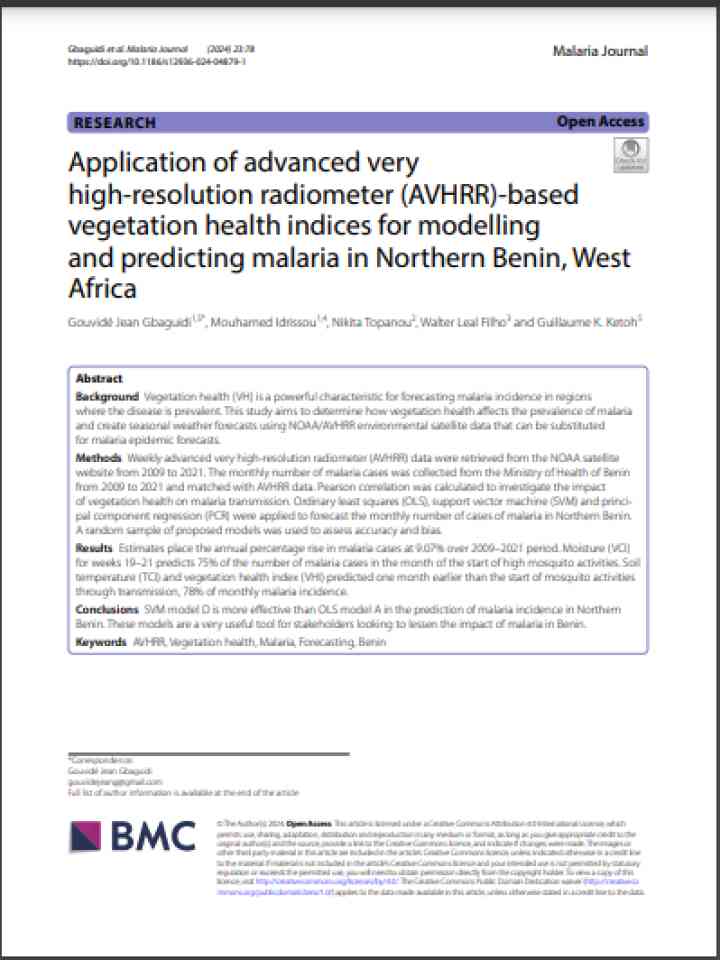Application of advanced very high‑resolution radiometer (AVHRR)‑based vegetation health indices for modelling and predicting malaria in Northern Benin, West Africa
This study aims to determine how vegetation health affects the prevalence of malaria and create seasonal weather forecasts using NOAA/AVHRR environmental satellite data that can be substituted for malaria epidemic forecasts. Vegetation health (VH) is a powerful characteristic for forecasting malaria incidence in regions
where the disease is prevalent. Weekly advanced very high-resolution radiometer (AVHRR) data were retrieved from the NOAA satellite website from 2009 to 2021.
The availability of real-time vegetation health (VH) indices obtained from satellite images can be a useful tool in anticipating malaria epidemics and putting appropriate preventive measures into place. The VH indices, such as those offered by the AVHRR sensor on NOAA polar orbiting satellites, can assist in tracking changes in environmental factors that influence mosquito reproduction and survival, the main vectors of malaria. By having access to these data, public health professionals and other interested parties may better prepare for and respond to possible malaria outbreaks,
Explore further
